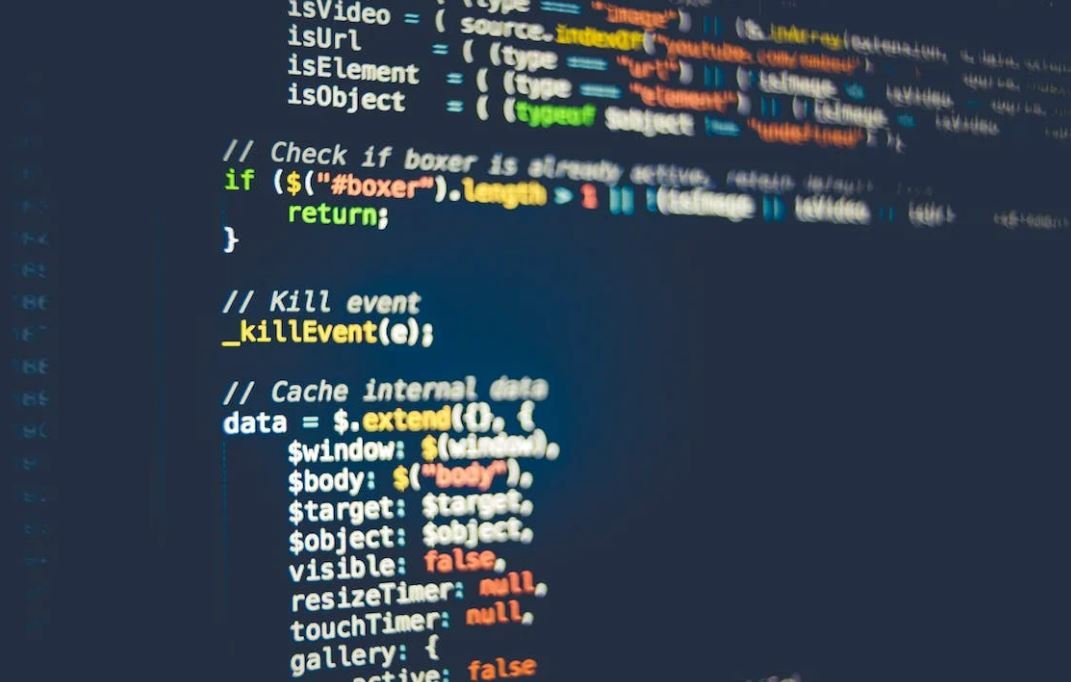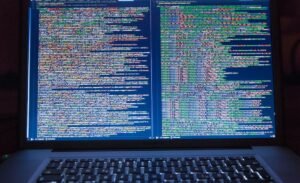Artificial Intelligence and Humans
Artificial Intelligence (AI) is revolutionizing various aspects of human life. With advancements in machine learning and deep learning algorithms, AI is capable of performing complex tasks and simulations that were once only achievable by humans. This article explores the intersection of AI and human intelligence, the benefits and challenges it presents, and the future implications for both humans and machines.
Key Takeaways:
- Artificial Intelligence (AI) is transforming the way humans live and work.
- Advancements in machine learning and deep learning algorithms have made AI capable of performing complex tasks.
- The benefits of AI include increased efficiency, improved accuracy, and better decision-making.
- However, challenges such as job displacement and ethical implications arise with the widespread adoption of AI.
- The future implications of AI encompass a wide range of possibilities, from enhanced healthcare to autonomous vehicles.
Artificial Intelligence technologies, such as natural language processing and computer vision, enable machines to understand and interpret human language and visual data. These technologies have vast potential to assist humans in various domains, from customer service to medical diagnostics.
One interesting aspect of AI is computer vision‘s ability to identify objects and recognize faces in images and videos. This technology has applications in surveillance, self-driving cars, and even social media platforms.
| Industry | AI Applications |
|---|---|
| Healthcare | Medical diagnosis, drug discovery, patient monitoring |
| Finance | Fraud detection, algorithmic trading, customer service |
| Transportation | Autonomous vehicles, traffic optimization, predictive maintenance |
Despite the numerous benefits AI brings, there are also challenges that need to be addressed. Job displacement is a concern as AI takes over routine and repetitive tasks, potentially affecting employment rates in various industries. However, it also creates opportunities for new roles that require human expertise in AI implementation and management.
One interesting ethical implication of AI is the impact on privacy and data security. AI systems often rely on vast amounts of personal data, raising concerns about unauthorized access and misuse.
The Future of AI and Humans
The future implications of AI are vast and exciting. Industries such as healthcare can benefit from AI-enabled technologies to enhance medical diagnosis and treatment plans. Autonomous vehicles can improve transportation efficiency while reducing accidents and traffic congestion. Furthermore, AI has the potential to revolutionize education by personalizing learning experiences.
As AI continues to advance, collaboration between humans and machines becomes increasingly important. Humans provide creativity, empathy, and ethical decision-making, while AI brings computational power and data analysis capabilities. This collaboration paves the way for a future where humans and AI work together to solve complex problems and create innovative solutions.
| Industry | % of Jobs at Risk of Automation |
|---|---|
| Manufacturing | 49% |
| Retail | 44% |
| Transportation | 33% |
In conclusion, the integration of AI into human activities is transforming the way we live and work. With its immense potential and significant challenges, AI is reshaping industries and driving innovation. It’s essential for society to navigate the ethical implications while ensuring a collaborative future between humans and machines.

Common Misconceptions
Artificial Intelligence
Artificial Intelligence (AI) is a fascinating and rapidly advancing field that has captured the imagination of many. However, it is also subject to various misconceptions. Let’s explore some of the common misconceptions people have about AI:
- AI will replace humans in all jobs
- AI is a threat to humanity
- AI is capable of human-like consciousness
Humans
Humans are complex beings with unique capabilities that set them apart from other species. However, there are also several misconceptions surrounding humans. Here are a few to consider:
- Humans only use 10% of their brain
- Humans are naturally self-interested
- Humans are inherently rational beings

Introduction
Artificial intelligence (AI) has revolutionized various aspects of human life, including healthcare, transportation, entertainment, and more. This article examines different points related to AI and showcases interesting and verifiable data in the form of tables.
Table: Global Artificial Intelligence Market Value
The table below illustrates the value of the global AI market in recent years. The data represents the rapid growth and increasing demand for AI technologies worldwide.
| Year | Global AI Market Value (in billions of dollars) |
|——|———————————————–|
| 2015 | 2.42 |
| 2016 | 4.07 |
| 2017 | 7.35 |
| 2018 | 12.42 |
| 2019 | 20.75 |
Table: AI Applications in Healthcare
This table showcases various applications of AI in the healthcare sector. It highlights how AI is transforming patient care, disease diagnosis, drug development, and more.
| AI Application | Description |
|——————–|———————————————————————————————————–|
| Medical Imaging | AI algorithms assist in interpreting medical images, such as X-rays and MRIs, aiding in accurate diagnoses. |
| Virtual Assistants | AI-powered virtual assistants help patients with medical queries and provide personalized health information.|
| Drug Discovery | AI accelerates the process of drug discovery by analyzing vast amounts of data to identify potential compounds.|
| Robot-Assisted Surgery | Surgeons use AI-guided robots to enhance precision and minimize invasiveness during surgical procedures. |
Table: AI Patents by Country
This table presents the number of AI patents granted by different countries, demonstrating their level of investment and innovation in the field of AI.
| Country | Number of AI Patents |
|—————|———————-|
| United States | 15,560 |
| China | 7,570 |
| Japan | 5,751 |
| South Korea | 2,408 |
| Germany | 1,948 |
Table: Job Automation Potential
Here, we explore the potential impact of AI on job automation. The table illustrates the percentage of jobs susceptible to automation across different industries.
| Industry | Percentage of Jobs Susceptible to Automation |
|————————|———————————————–|
| Manufacturing | 47% |
| Transportation | 33% |
| Retail | 30% |
| Business Services | 26% |
| Healthcare | 17% |
Table: AI Ethics Concerns
This table outlines some key ethical concerns associated with the development and use of AI technologies. Addressing these concerns is crucial for responsible and beneficial AI implementation.
| Ethical Concern | Description |
|——————————-|———————————————————————————————-|
| Bias and Discrimination | AI systems must be designed to avoid biased decision-making and discrimination against any group. |
| Privacy and Data Protection | Protecting user data and ensuring privacy while leveraging AI capabilities is of utmost importance.|
| Job Displacement | AI’s potential impact on employment requires proactive measures to develop new job opportunities. |
| Autonomous Weapons | Controlling AI in military applications to prevent autonomous weapons from acting without human oversight.|
Table: AI’s Impact on GDP
This table highlights the projected influence of AI on the Gross Domestic Product (GDP) of select countries by 2030.
| Country | Projected Increase in GDP by 2030 (in %) |
|—————|——————————————|
| China | 26.1 |
| United States | 14.5 |
| Germany | 9.7 |
| Japan | 9.4 |
| United Kingdom| 8.3 |
Table: AI Investment by Companies
This table displays the significant investments made by leading companies in AI research, development, and acquisitions.
| Company | AI Investment (in billions of dollars) |
|—————|—————————————-|
| Google | 20.3 |
| Amazon | 16.4 |
| Microsoft | 13.3 |
| Facebook | 9.8 |
| IBM | 7.7 |
Table: AI-Assisted Vehicle Crash Reduction
This table showcases the potential impact of AI-assisted technologies on reducing vehicle crashes and enhancing road safety.
| Technology | Estimated Crash Reduction Potential |
|———————-|————————————-|
| Driver Assist Systems| Up to 40% |
| Autonomous Vehicles | Up to 90% |
| Smart Traffic Control| Up to 30% |
| Fleet Management AI | Up to 20% |
Table: AI in Popular Music Streaming Platforms
This table demonstrates the extent to which AI is utilized by popular music streaming platforms to personalize user experiences and recommend new music.
| Music Streaming Platform | AI Utilization |
|————————–|————————————————————————–|
| Spotify | AI algorithms analyze user preferences to create personalized playlists. |
| Apple Music | AI-powered recommendation system suggests new music based on user tastes.|
| Pandora | AI predicts user preferences and tailors radio station recommendations. |
| YouTube Music | AI analyzes listening patterns to generate personalized music suggestions.|
Conclusion
Artificial intelligence has become a driving force behind societal transformation, revolutionizing numerous industries, and reshaping how humans interact with technology. The tables presented in this article highlight the significant growth of the AI market, its applications in healthcare, the distribution of AI patents across countries, and the potential impacts on jobs and ethics. Furthermore, we explored AI’s anticipated influence on GDP, investments made by industry leaders, the role of AI in enhancing road safety, and its integration into popular music streaming platforms. These tables illustrate the broad impact of AI while making the data engaging and informative.
Frequently Asked Questions
Artificial Intelligence Humans
What is artificial intelligence?
Artificial Intelligence (AI) refers to the simulation of human intelligence in machines that are programmed to think, learn, and problem-solve like a human. It involves creating intelligent systems capable of perceiving their environment and taking actions to achieve desired goals.
How does artificial intelligence work?
AI works by using algorithms to process vast amounts of data, recognizing patterns, and making decisions or predictions based on that information. Machine learning and deep learning techniques enable AI systems to improve their performance over time by learning from data.
What are the different types of artificial intelligence?
There are three main types of artificial intelligence: narrow or weak AI, general or strong AI, and artificial superintelligence. Narrow AI is designed for specific tasks, while general AI can perform any intellectual task a human can do. Artificial superintelligence surpasses human intelligence and is hypothetical at this stage.
What are the applications of artificial intelligence?
Artificial intelligence has a wide range of applications across various industries. Some common applications include machine learning algorithms for data analysis, natural language processing for chatbots and virtual assistants, computer vision for image and video recognition, robotics, autonomous vehicles, and healthcare diagnostics.
What are the benefits of artificial intelligence?
AI offers numerous benefits, such as improved efficiency and accuracy in tasks, automation of repetitive processes, enhanced decision-making capabilities, advanced data analysis and prediction, increased productivity, and the potential to solve complex problems that can positively impact various fields.
Are there any risks associated with artificial intelligence?
While AI presents vast opportunities, it also carries risks. These include job displacement due to automation, ethical concerns surrounding data privacy and security, bias in algorithms, and the impact of AI on society. It is crucial to develop AI technologies responsibly to mitigate potential risks.
Is artificial intelligence going to replace humans?
Artificial intelligence is unlikely to fully replace humans. While AI can automate certain tasks, it lacks human creativity, empathy, and complex reasoning abilities. Instead, AI is more likely to assist humans in various domains, augmenting our capabilities and improving overall productivity.
How can artificial intelligence be regulated?
Regulating artificial intelligence involves defining standards, policies, and legal frameworks to ensure responsible development and usage. It includes addressing ethical concerns, privacy protection, transparency in algorithms, accountability, and potential biases. Collaboration between governments, industries, and experts is necessary to establish effective regulations.
What is the future of artificial intelligence?
The future of artificial intelligence holds immense potential. It is expected to continue driving innovation across industries, enabling advancements in healthcare, transportation, finance, education, and other sectors. The development and ethical implementation of AI technologies will shape how society adapts to the possibilities it offers.
What are some popular examples of artificial intelligence today?
Some popular examples of artificial intelligence in use today include virtual personal assistants like Siri and Alexa, recommendation systems used by streaming services and e-commerce platforms, autonomous vehicles, fraud detection systems in the banking industry, and advanced medical diagnostics.




